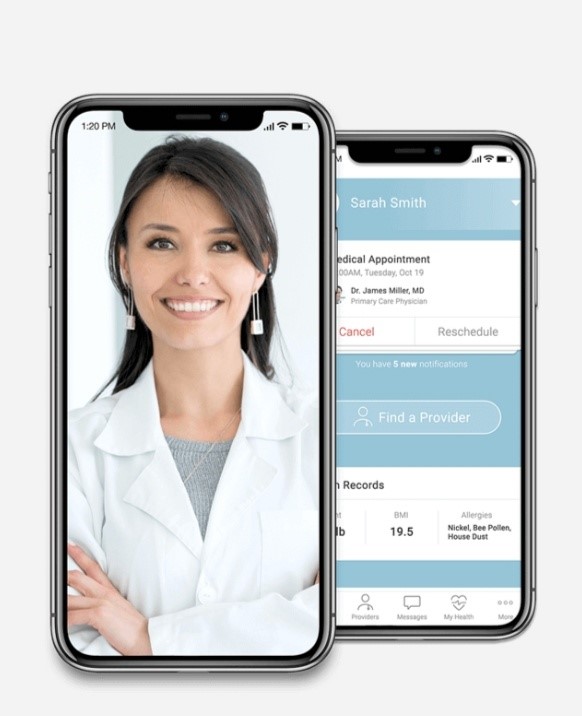Coronavirus has been around for more than a year and we have embraced telemedicine as a measure of reducing its spread. Patients are now able to make consultations and remote diagnoses.
Telemedicine is the remote diagnosis and treatment of patients by means of telecommunications technology. It allows long-distance patient and clinician contact, care, advice, reminders, education, intervention, monitoring, and remote admissions. It makes it possible for physicians to treat patients whenever needed and wherever the patient is, by using a computer or smartphone
This tool makes healthcare more accessible, cost-effective, and that increases patient engagement. It has contributed to seniors having the choice to age in place and in addition, the patients that reside in rural areas that previously had difficulties accessing a physician can now reach them virtually.
Physicians and patients can share information in real-time from one computer screen to another. They can even see and capture readings from medical devices at a faraway location. Using telemedicine software, patients can see a doctor for diagnosis and treatment without having to wait for an appointment. Patients can consult a physician at the comfort of their home.
With technology becoming more robust, the future of telehealth could include international collaboration. Some countries offer medical advances that the United States does not have readily available, but telemedicine would lessen the barriers.
There are 3 common types of telemedicine;
- Interactive Medicine- which allows patients and physicians to communicate in real-time while maintaining HIPAA compliance. Communication methods include both phone consultations and video conferences. Physicians can assess a patient’s medical history, perform psychiatric evaluation and more.
- Store and Forward- which permits providers to share patient information with a practitioner in another location. A primary physician can share patients’ records and medical data with a specialist for further analysis and diagnosis.
- Remote Patient Monitoring- which allows remote caregivers to monitor patients that reside at home by using a mobile medical device to collect data i.e. blood sugar/ blood pressure.
Using medical devices, vital signs can be sent to the doctor so that adjustments can be made on the type of care needed.
Telemedicine offers, EKG, Ultrasound, Dermatoscope and pulse oximeter, and many more.
BENEFITS
- Transportation; patients can avoid spending gas money or wasting time in traffic with video consultations.
- No missing work; Individuals can schedule a consultation during a work break or even after work hours
- Childcare/Eldercare Challenges; those who struggle to find care options can use telemedicine solutions.
- Providers can also benefit from increased revenue
- By utilizing telemedicine, physicians can see more patients without the need to hire more staff or increase office space.
- Using telemedicine will reduce the spread of infectious diseases like coronavirus.
Some of the best telemedicine apps of 2020 include;
- MDLIVE
- Lemonaid
- LiveHealth Online Mobile
- PlushCare: Video Doctor Visits
- Spruce-care Messenger
- Teladoc
- VSee
There are many more apps that are used by both iPhone and Android phones and easily accessible.
MDLIVE
Founded in 2009, it is a leading telehealth provider of online and on-demand healthcare delivery services and software that benefit patients, hospitals, employers, payers, physician practice groups, and accountable care organizations.
The cloud-based Virtual Medical Office software platform makes it possible for patients, medical professionals and plan administrators to collaborate seamlessly and securely via voice, video, email, and mobile devices. Payers and providers can also utilize the HIPAA-compliant system to collect and share clinical data from patient medical records, lab results, and in-home biometric devices for real-time risk assessments, wellness advice, diagnosis, and treatment.
It also provides affordable consultations via a nationwide network of board-certified physicians and licensed therapists. The average wait time is under 15 minutes to consult.
Some of the medical specialties that can use telemedicine include;
- Radiology
- Mental Health
- Pediatric
- Dermatology
The Medical Concierge Group (TMCG) announced another first coming to the Uganda health care landscape. TMCG has launched and implemented a chain of telemedicine clinics in 102 districts of Uganda by World Vision in partnership and TMCG as the lead mHealth organization.
The clinics focus on a convenient, high quality, and express service model accessible in local neighborhoods.
Today, most people have access to basic telemedicine devices like mobile phones and computers. With improved accessibility, individuals in rural areas and busy urban areas can connect with a provider with ease. Home-use medical devices make it possible for caregivers to monitor everything from vitals to glucose levels. Physicians can gather essential medical information and make a diagnosis without patients stepping foot in a doctors’ office.
As patients experience reduced wait times and greater access to care, the hesitation regarding telemedicine will decrease. Physicians will notice better patient outcomes and more revenue without an increased workload. In addition, private payers will respond to demand after solidifying best practices.
By using telemedicine, paramedics can use technology to see the capacity of an emergency room in real-time instead of heading to the hospital and then being diverted later causing a delay and risking the patient’s health.


